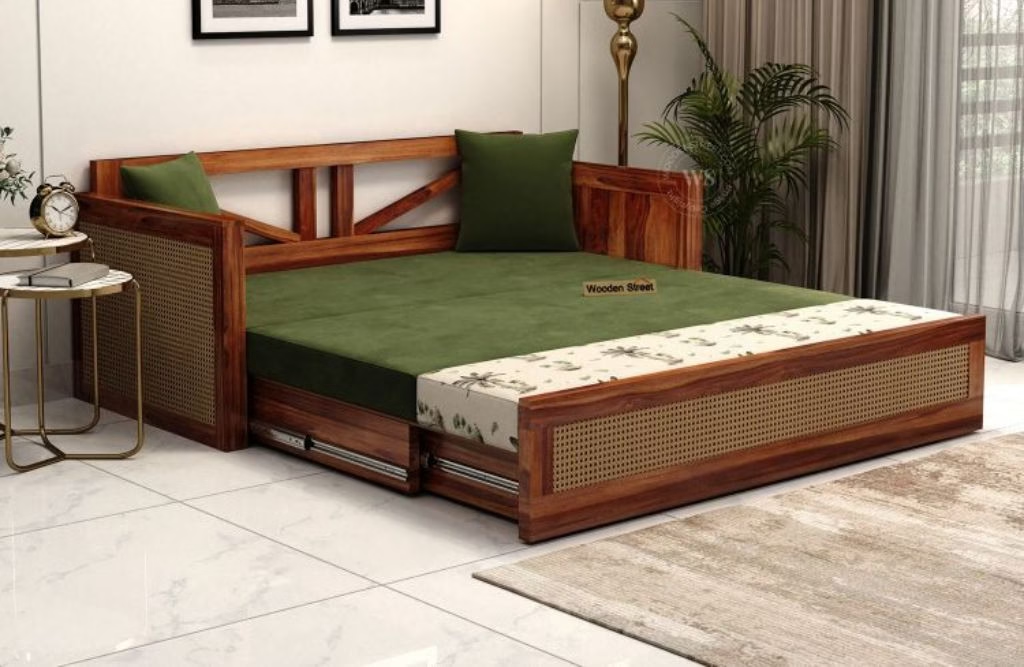Furniture gives our homes comfort, support, and style. However, traditional furniture production and consumption have major environmental implications. Non-renewable resources, hazardous chemicals, and energy-intensive industries pollute air, water, and soil. A fast-paced consumer society encourages furniture removal after a few years, resulting in significant waste and carbon emissions. Sustainable furniture design has become a feasible environmental solution in recent years.
The supermarket, wardrobe, and furniture store are all sustainable. As furniture becomes increasingly like apparel and fads create new needs, from the coffee table to the new kitchen lamp, environmental sustainability inevitably arises. When choosing furniture, people prioritize quality and durability over organic, green, and fair. The furniture sector offers several sustainable design alternatives. Sustainable furniture design can affect the environment even with a two or 4 door wardrobe. Sustainable furniture designers consider all aspects of design and manufacture to make functional, eco-friendly furniture.
What Is Sustainable Furniture Designing, And Why Is It Important?
Sustainable furniture design addresses user needs for function, aesthetics, and ergonomics while minimizing environmental effects. This strategy emphasizes renewable resources, eco-friendly production methods, and durable, repairable, and recyclable designs. Sustainable furniture design reduces the furniture industry’s carbon footprint, conserves natural resources, and creates healthier living spaces.
Importance Of Sustainable Furniture Design
Sustainable furniture design emphasizes renewable and biodegradable materials. Sustainable furniture designers employ natural materials that can be cultivated or regrown instead of fossil fuel-based plastic, synthetic fibres, and plywood. Bamboo furniture is lightweight, durable, and elegant. Cork, wool, cotton, and linen are biodegradable, breathable, and eco-friendly, making them great furniture materials.
Sustainable furniture design requires eco-friendly production methods. Formaldehyde and VOCs, used in traditional furniture manufacture, can harm humans and the environment. Sustainable furniture designers use water-based adhesives, natural dyes, and energy-efficient technology to reduce chemical use and carbon emissions.
Sustainable furniture design emphasizes durability, repairability, and recyclability, as well as renewable materials and eco-friendly production. This approach seeks to reduce the need for frequent furniture replacements and minimize waste. For instance, sustainable furniture designers use modular designs that allow users to replace individual components instead of discarding the entire furniture piece. They also incorporate features such as easy-to-clean surfaces, adjustable parts, and multi-functional elements that enhance the longevity and functionality of the furniture.
What Are Some Renewable Materials That Sustainable Furniture Designers Use?
Wood: Wood furniture has always been popular. Wood, if responsibly sourced, is one of the most environmentally friendly materials since it is infinitely renewable and stores carbon, lowering carbon emissions.
Wood varieties include:
Pine – Fast-growing, extensively available, and carbon-storing.
Oak – Carbon-neutral, ethically sourced oak absorbs carbon dioxide well.
Beech – Harvested beech is less than new growth, making it more sustainable than declining woodlands.
- Bamboo
Bamboo is a tree-like grass, not wood. One of the most ecological furniture materials, it grows quicker than wood. Some bamboo species grow 36 inches every day. Unlike other trees, it can attain full growth in one to five years. Bamboo absorbs carbon from the environment and releases high oxygen levels, minimizing its carbon footprint. Bamboo furniture is eco-friendly and stylish. It looks great and can enhance your living space.
- Steel
Steel has several sustainable qualities. It is strong and is infinitely recyclable. It’s nontoxic and requires little energy to make.
- Eco-friendly fabrics
Wool, hemp, and linen are sustainable, textured, and relaxing. Instead of buying new chairs, reupholster them in these fabrics. Wool is sustainable. It is naturally flame-retardant and heat-regulating, and renewable. Hemp is versatile and easy to grow. It regulates heat like wool. Hemp is mixed with other materials to make sustainable fabrics and coverings. Cotton and silk make the finished cloth softer.
Benefits Of Sustainable Furniture Designing
Sustainable furniture design has several benefits for the environment and society. By using renewable materials, sustainable furniture designers promote the conservation of natural resources and contribute to the circular economy.
- Sustainable furniture design reduces greenhouse gas emissions, which cause climate change. Sustainable furniture designers contribute to a greener future by adopting eco-friendly production methods and designs that enhance durability, repairability, and recyclability.
- Sustainable furniture design improves user health and well-being. Formaldehyde and VOCs, used in traditional furniture making, can cause respiratory problems, allergies, and other health issues. Sustainable furniture design creates healthier interior settings with nontoxic and low-impact production methods and materials.
- Sustainable furniture also prioritizes ergonomics and comfort, so customers can enjoy their furniture without compromising their health.
- Sustainable furniture design promotes social responsibility and ethical practices in the furniture industry.
Conclusion
In conclusion, sustainable furniture design is an essential aspect of creating a more sustainable future. By using renewable materials, reducing waste, and considering the end-of-life impact of furniture, sustainable furniture designers can minimize the environmental impact of furniture production. Creating furniture that is both functional and environmentally responsible helps to promote a culture of sustainable consumption and contributes to a healthier planet. By designing with the environment in mind, we can create furniture that is not only beautiful but also sustainable.










